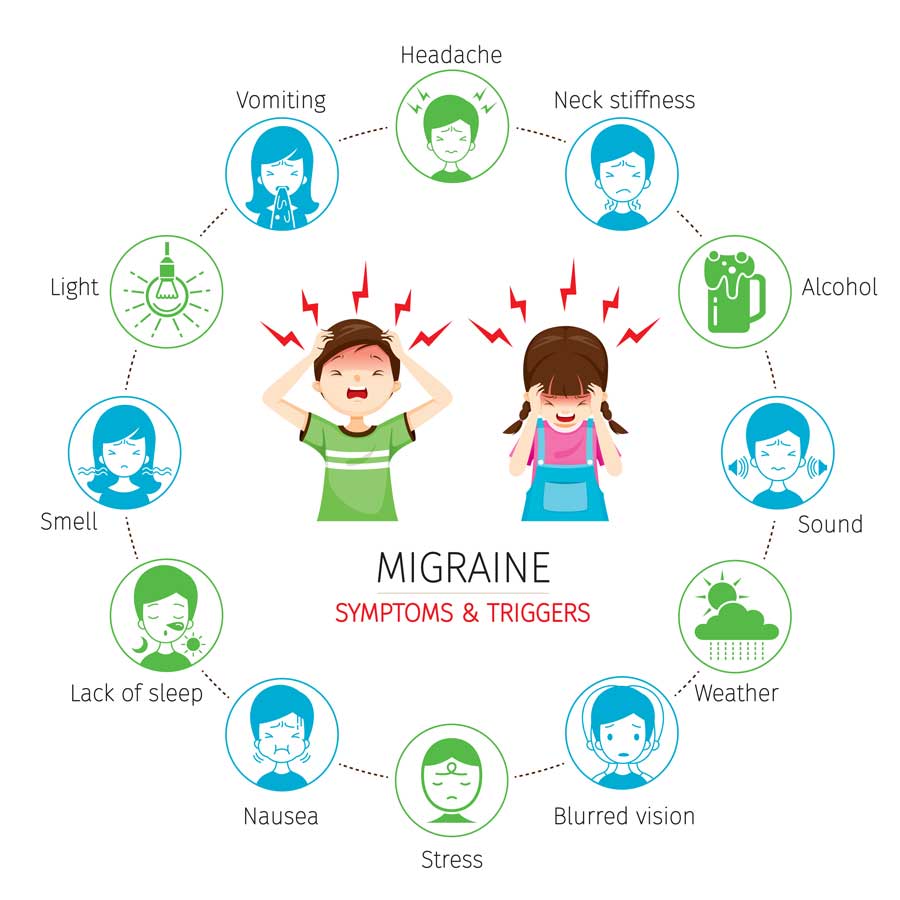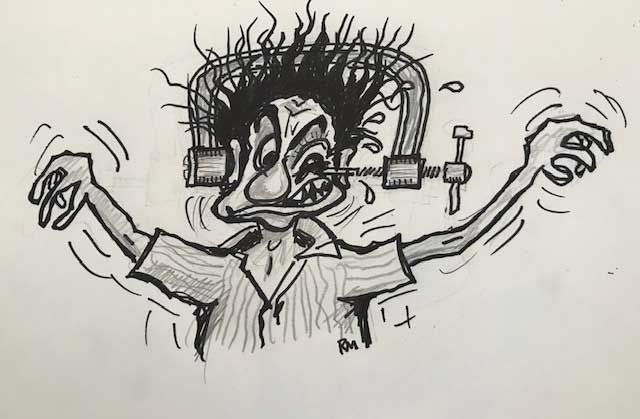Headaches
In most cases, headaches require an exhaustive case history, experience, specific diagnostic procedures, and often also patience, but they can be effectively treated. Headaches can have a large variety of causes and characteristics. Keeping a pain diary in cases of chronic pain will be useful. The most important types of headaches we treat include:
Migraine

A migraine is a severe, pulsating headache that usually occurs relatively suddenly and is often felt on one side of the head. Migraine is often accompanied by symptoms such as photophobia and sensitivity to noise, nausea, and vomiting. The individual migraine attack can be accompanied by a so-called aura. This can cause visual, sensory, motor and occasionally also speech dysfunction.
In cases of frequent migraine attacks, pharmacological prevention with drugs, including botulinum toxin is possible. Now, a treatment with monoclonal antibodies is even possible, by means of which a lasting significant improvement can be achieved in a large number of patients.
Tension headaches
 This form of headache can be episodic or chronic. The pain occurs in the entire head and is of a pressing or tearing nature. Mild to moderate pain that mostly does not increase with exertion can last from some minutes to several days. In addition to common pain-relieving medication in the form of tablets, this pain can often be treated by means of a specific infiltration of the cervical spine and head. Thus, we also apply pain therapy with botulinum toxin. Particularly in the case of tension headaches, injections of this medication into the neck and chewing muscles can lead to relaxation, which then results in a relief of the pain.
This form of headache can be episodic or chronic. The pain occurs in the entire head and is of a pressing or tearing nature. Mild to moderate pain that mostly does not increase with exertion can last from some minutes to several days. In addition to common pain-relieving medication in the form of tablets, this pain can often be treated by means of a specific infiltration of the cervical spine and head. Thus, we also apply pain therapy with botulinum toxin. Particularly in the case of tension headaches, injections of this medication into the neck and chewing muscles can lead to relaxation, which then results in a relief of the pain.
Cluster headache
 Cluster headache is the term used to describe most intense, severe hemifacial attacks of pain that always affects the same side of the head. Several such attacks can occur on a daily basis, lasting from a few minutes to a few hours. The pain is perceived as burning or stabbing, occasionally also as a burning pain. It is frequently accompanied by psychomotor restlessness and reddened eyes, nasal congestion and watery eyes.
Cluster headache is the term used to describe most intense, severe hemifacial attacks of pain that always affects the same side of the head. Several such attacks can occur on a daily basis, lasting from a few minutes to a few hours. The pain is perceived as burning or stabbing, occasionally also as a burning pain. It is frequently accompanied by psychomotor restlessness and reddened eyes, nasal congestion and watery eyes.





